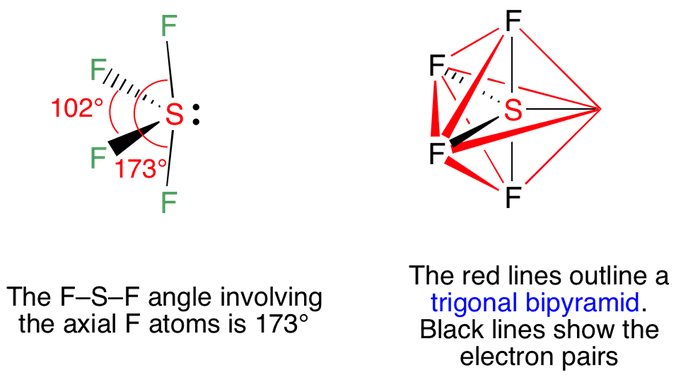



Furthermore, the splitting of d-orbitals is perturbed by π-donating ligands in contrast to octahedral complexes. The nitrogen in ammonia has 5 valence electrons and bonds with three hydrogen atoms to complete the octet.This would result in the geometry of a regular tetrahedron with each bond angle equal to cos 1 ( 1 / 3) 109.5°. Show the direction of the dipole moment for polar molecules. Their relative ordering depends on the nature of the particular complex. Uneven distribution of electron density (all polar bonds do not cancel) polar molecule 4. Study with Quizlet and memorize flashcards containing terms like A molecule with a square pyramidal molecular geometry has a bond angle of, Give the molecular geometry and number of electron groups for BrF3., Identify the number of electron groups around a molecule with sp hybridization and more. The d xy, d xz and d yz orbitals are generally presented as degenerate but they have to split into two different energy levels with respect to the irreducible representations of the point group D 4h. It bears electron density on the x- and y-axes and therefore interacts with the filled ligand orbitals. However, for purely σ-donating ligands the d z 2 orbital is still higher in energy than the d xy, d xz and d yz orbitals because of the torus shaped lobe of the d z 2 orbital. When the two axial ligands are removed to generate a square planar geometry, the d z 2 orbital is driven lower in energy as electron-electron repulsion with ligands on the z-axis is no longer present. Splitting of d-orbitals Representative d-orbital splitting diagrams for square planar complexes featuring σ-donor (left) and σ+π-donor (right) ligands.Ī general d-orbital splitting diagram for square planar (D 4h) transition metal complexes can be derived from the general octahedral (O h) splitting diagram, in which the d z 2 and the d x 2− y 2 orbitals are degenerate and higher in energy than the degenerate set of d xy, d xz and d yz orbitals. Certain ligands (such as porphyrins) stabilize this geometry. Other examples include Vaska's complex and Zeise's salt. Many homogeneous catalysts are square planar in their resting state, such as Wilkinson's catalyst and Crabtree's catalyst. Notable examples include the anticancer drugs cisplatin,, and carboplatin. The geometry is prevalent for transition metal complexes with d 8 configuration, which includes Rh(I), Ir(I), Pd(II), Pt(II), and Au(III). The noble gas compound xenon tetrafluoride adopts this structure as predicted by VSEPR theory. Numerous compounds adopt this geometry, examples being especially numerous for transition metal complexes. As the name suggests, molecules of this geometry have their atoms positioned at the corners. The square planar molecular geometry in chemistry describes the stereochemistry (spatial arrangement of atoms) that is adopted by certain chemical compounds. Structure of cisplatin, an example of a molecule with the square planar coordination geometry. Xenon tetrafluoride, Potassium tetrachloroplatinate


 0 kommentar(er)
0 kommentar(er)
